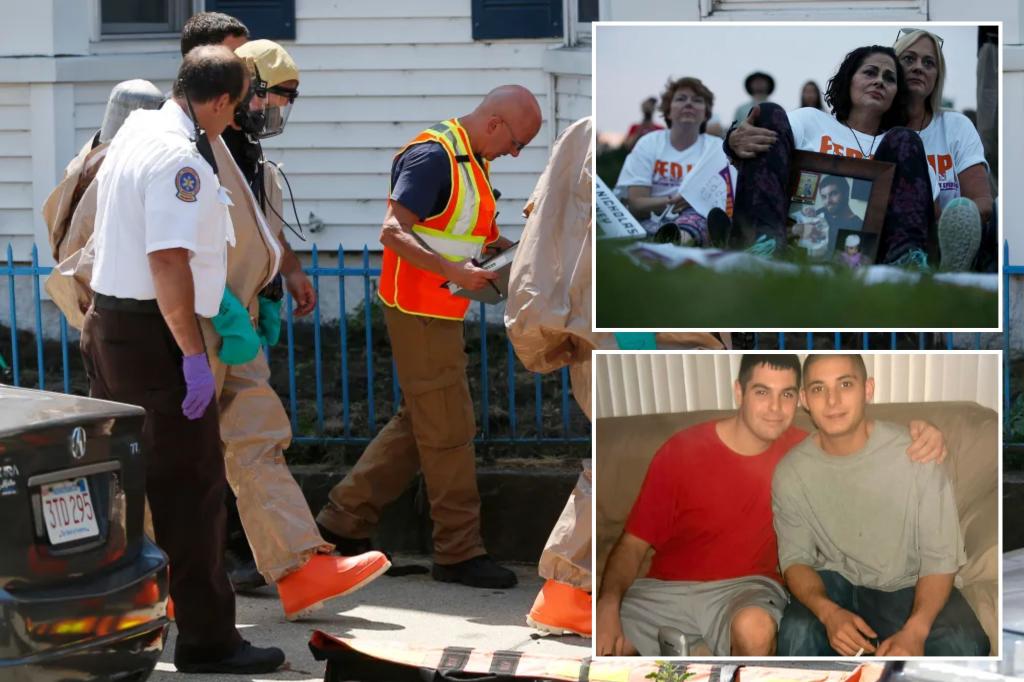Overdose deaths involving a synthetic opioid 100 times stronger than fentanyl have more than doubled in New York City, while a new, deadly sedative has been detected in the city’s drug supply for the first time.
The two deadly drugs are wreaking havoc on public health, with city officials issuing warnings Thursday about carfentanil, a drug powerful enough to sedate elephants, and medetomidine, an animal sedative that experts say is more powerful than the “zombie drug” xylazine.
But even as these two poisons made the city’s cocaine and heroin supplies even more dangerous, the city Health Department continued to promote “harm reduction” programs like providing addicts with clean needles, rather than prioritizing getting users into rehab facilities and helping them stay high.
“All New Yorkers deserve to be treated with dignity and respect and receive care free of bias. We know that stigma keeps people from seeking services,” Health Department spokesperson Rachel Vick told The Post.
“Our goal is to reduce overdose deaths and improve lives by reducing the risk of death for people who use drugs and ensuring everyone has access to quality harm reduction, treatment and recovery services when, where and how they need them.”
Carfentanil The drug has been responsible for seven fatal overdoses in New York City through June, more than double the three overdose deaths during the same period last year, according to preliminary data from New York City health officials and the medical examiner’s office.
Health officials said eight opioid samples taken from the Bronx, Brooklyn and Manhattan between March and June were found to be tainted with fentanyl as well as traces of other deadly substances.
Meanwhile, city law enforcement agencies have seen an increase in busts involving the powerful drug, with at least 35 busts between November and May, according to the Special Narcotics Prosecutor’s Office.
“Carfentanil is 100 times more potent than fentanyl, and its mere presence in our drug supply is a serious concern given the enormous number of lives that fentanyl has taken in our cities,” Special Narcotics Counsel Bridget G. Brennan told The Washington Post.
In 2022, More than 3,000 people died The number of fatal overdose deaths in New York City, most of which involved the use of synthetic opioids, is up 12% from the roughly 2,700 drug-related deaths in 2021, health officials said.
Authorities say the majority of carfentanil seizures over the past year have occurred in Brooklyn, followed by Queens, Staten Island and the Bronx. In nearly every case, the deadly drug was mixed with fentanyl or other substances.
Teri Zaccone of New Port Richey, Florida, said she had never heard of the deadly synthetic opioid until 2017, when her sons, Thomas DeVito, 29, of Margate, and Paul DeVito, 31, of Coconut Creek, were killed.
“It destroys lives, it destroys people who are addicted, it destroys their families,” Zaccone, 56, said of carfentanil, adding that Thomas leaves behind a daughter, Olivia, now 8 years old.
“After losing my children, I will never be the same person again.”
Zaccone said city officials should do more to warn New Yorkers about the dangers of carfentanil and should focus on getting addicts off the drug, rather than giving them free needles.
“Cocaine, heroin, whatever it is, [carfentanil] Even the smallest amount can kill them,” she said.
She said government officials need to make sober living facilities and detox programs “more affordable.”
City health officials said testing of opioid samples in the Bronx in late June that also contained fentanyl had found medetomidine in the drug supply for the first time.
Medetomidine, which can cause the heart rate to plummet to dangerous levels, has devastated communities across the country in recent months. The sedative has been linked to mass overdose outbreaks in Philadelphia and Chicago, according to a National Psychiatric Center report. Forensic Research and Educationas well At least three people died In Michigan.
Like xylazine, the effects of this non-opioid sedative cannot be countered by naloxone, a drug used to reverse fentanyl overdoses.
“This is not an overdose crisis or an addiction crisis. This is a problem of a tainted and out-of-control supply,” said David Frank, an associate research scientist at New York University.
These substances are typically shipped from China or India to Latin America, where drug cartels mix them with other narcotics such as cocaine and heroin.
Drug cartels and street dealers “adulterate their drug supply with these deadly synthetic substances to increase addictive properties, expand their customer base and make more money,” said Frank A. Tarentino III, special agent in charge of the DEA’s New York division.
“Furthermore, the introduction of more potent fentanyl drugs such as carfentanil and medetomidine, which are more potent and dangerous than xylazine, will result in even greater devastating overdoses and addictions than what we are already seeing.”
“Even as we’re talking about fentanyl, Chinese companies are producing more powerful synthetic drugs,” said Derek Maltz, former director of the DEA’s special operations division, referring to other new types of drugs. Like Nitazen.
“The chemical composition of these drugs is constantly changing. It’s like whack-a-mole.”
City Council Member Joan Arriola (R-Queens) blasted city officials for continuing to encourage drug addicts to play Russian roulette with their lives.
“It’s enough to pamper users and give them a safe place to get high,” she said.
“Fentanyl, and now carfentanil, are killing New York’s young people. It’s time for the government to once again get tough and start cracking down on these extremely dangerous drugs and the dealers who sell them.”


